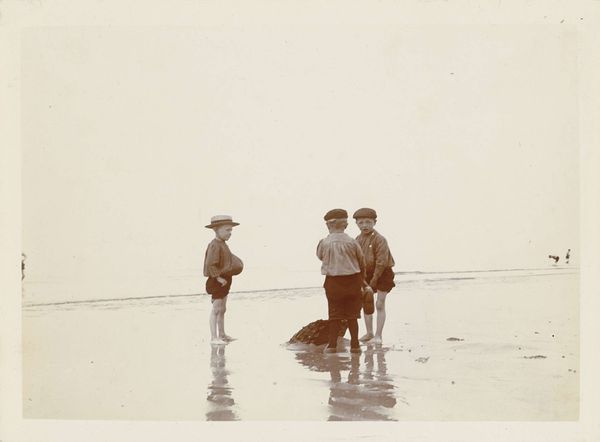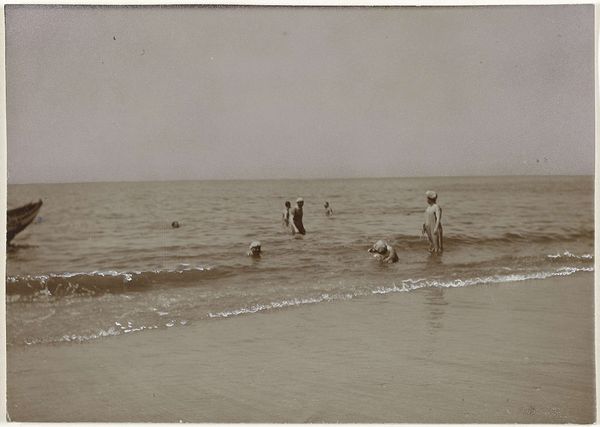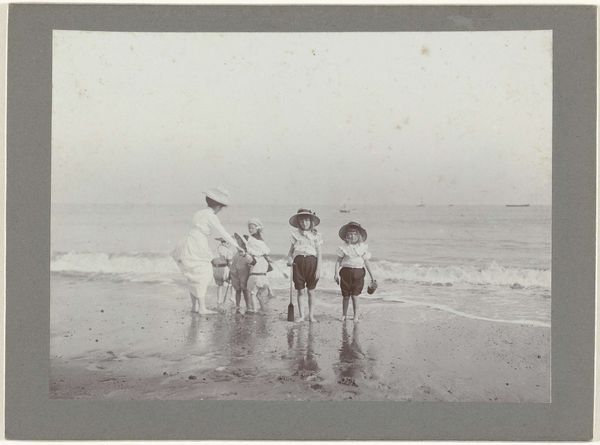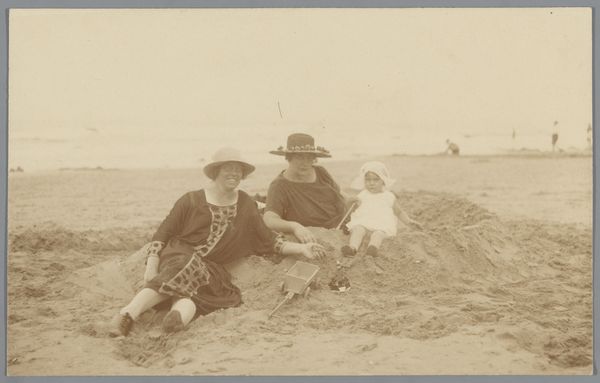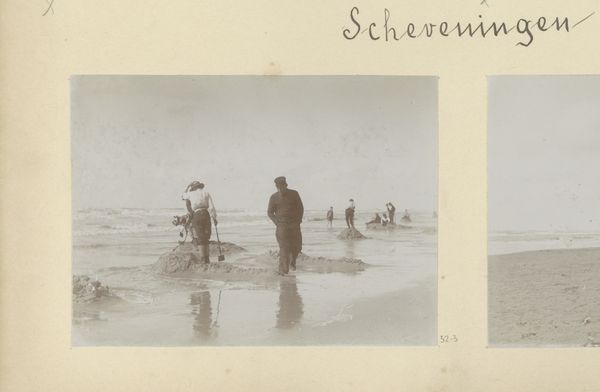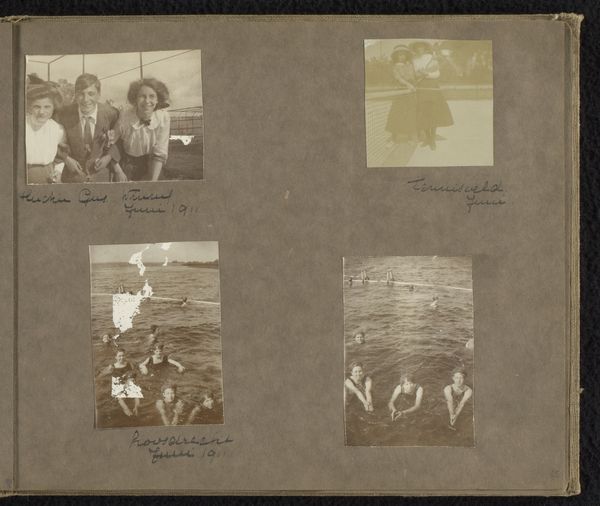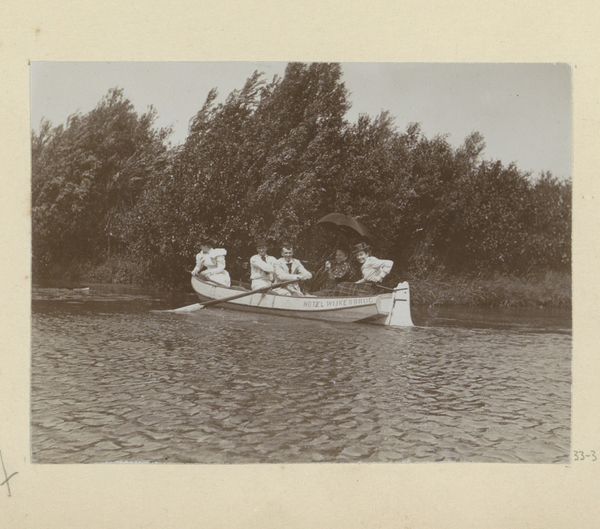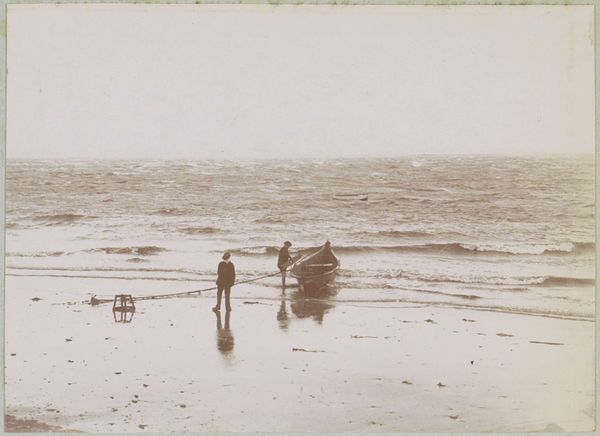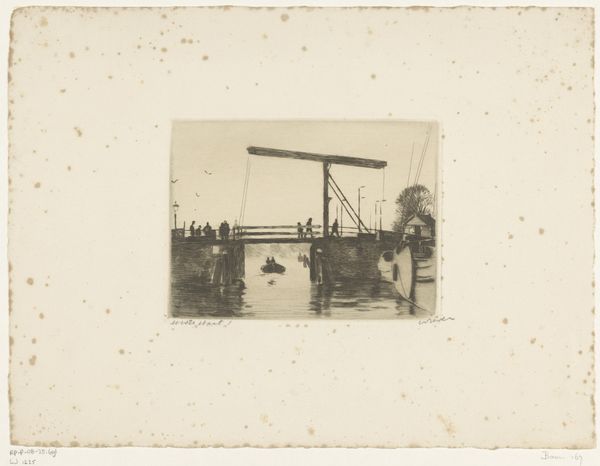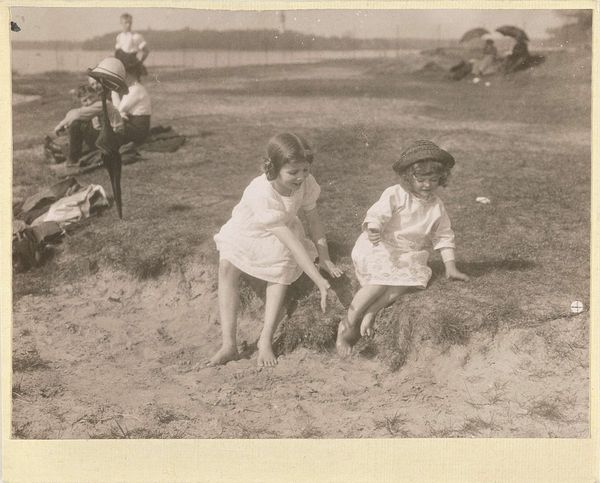
Koosje, Daan en Ben Ochse en een andere jongen dragen een rieten strandstoel uit zee c. 1925 - 1935
0:00
0:00
photography, gelatin-silver-print
#
portrait
#
photography
#
gelatin-silver-print
#
genre-painting
#
realism
Dimensions: height 59 mm, width 90 mm
Copyright: Rijks Museum: Open Domain
Curator: Here we have a gelatin-silver print from around 1925-1935. It's an anonymous photograph titled, "Koosje, Daan en Ben Ochse en een andere jongen dragen een rieten strandstoel uit zee" – which translates to “Koosje, Daan and Ben Ochse and another boy carry a wicker beach chair from the sea.” Editor: It looks like a perfectly ordinary scene, but there’s a wonderful quiet energy. They look windswept but determined. Curator: Exactly. Its apparent simplicity is deceptive. Genre scenes like this were very popular in the interwar period, documenting everyday life with an emphasis on realism. Editor: I see several symbolic readings. The beach chair they're hauling might be seen as a symbol of leisure and bourgeois comfort. The act of dragging it from the sea, however, suggests disruption. Curator: Interesting point. Post-war, there was growing tension. A traditional item now requires labor and struggle against nature. Consider the formal nature of these beach photographs at the time. They are participating in the modern imagery of leisure, while demonstrating their strength in their daily lives. Editor: Absolutely. This labor connects to deeper historical currents—the social dynamics of that era where play becomes hard work. Look how the image highlights effort, showing children burdened rather than enjoying freedom. Curator: Indeed. What appears at first glance to be an ordinary, documentary style, really operates at a much deeper level. A tension and interplay that shapes not just beach narratives but collective social ones. Editor: It truly allows one to pause and reflect. Beyond this single moment, on these greater shifts, on who we are, what images mean, and ultimately how cultural meanings endure or adapt. Curator: Right. I leave this picture today not as only the name, the material of the chair and its photograph, but as the complex interplay of culture it reveals.
Comments
No comments
Be the first to comment and join the conversation on the ultimate creative platform.
